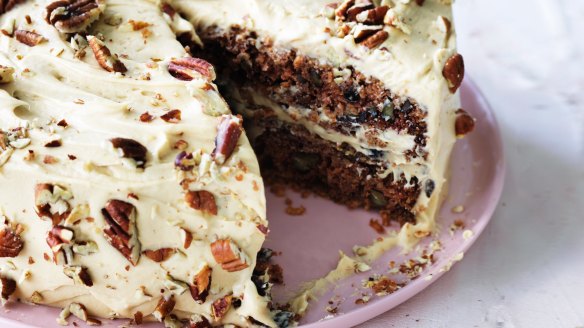Can I use parsnip instead of carrot in a cake?

- Dan Lepard's ginger nut carrot cake with spiced banana icing
- Helen Goh's burnt butter parsnip cake (pictured)
Can I use parsnip instead of carrot in a carrot cake? H. Glanville
You can use any root vegetable you like, my friend. Go wild. There are a few things to consider, however, when you substitute ingredients in baking. Baking recipes are based on the ratio of flour to liquid, fat and sugar. Mess around with this ratio, and you will end up with some interesting unintended outcomes. Carrots are about 80-85 per cent water, some of which is released into the batter when the cake is baked. Other vegetables, such as zucchini, have more significant water content, in this case, about 95 per cent. If you substitute grated carrot with grated zucchini, more water will be released into the batter, making for a more moist and dense cake. Most root vegetables, however, have about the same water content so you can make a parsnip cake if you like. Parsnips have a particular sharp note, so you might want to add a "sweet" spice such as cinnamon or nutmeg. If you're into vegetable swapping, perhaps try a swede cake. This is a brassica and can have a sulphurous note, so consider a "high" note such as aromatic honey and a pinch of cardamom. Whatever the case, a good layer of cream cheese icing laced with a good dash of quality vanilla makes any vegetable cake, be it carrot, parsnip, swede, or kohlrabi, worth making a pot of tea for.
How did the Italians eat spaghetti before 1492 when Christopher Columbus brought the tomato from the new world? R. Pawlak
There is a timeless pasta dish from the Apennines north of Rome called pasta alla gricia. To make it, you cook 350g of rigatoni in slightly salted water for about five minutes until half done, drain, while saving two cups of the cooking liquid. Add this starchy water to a pan in which 250g of diced guanciale is browning in its delicious fat. Cook this on high until the water and fat have emulsified, then add the drained pasta and continue to cook for five minutes until the pasta is cooked through and the sauce reduced. Add 60g finely grated pecorino cheese and mix through. Season to taste. It is even more delicious than cacio e pepe, the trendy pasta dish with an emulsified sauce made from butter, cheese and pepper. These are both dishes that are typical of the way pasta was served before what is erroneously called the Columbian exchange. Christopher Columbus did not bring tomatoes back from the Americas. It was the clergy who accompanied the conquistadors in the 1500s who grew seeds taken from Mexico in their hospital gardens in Seville long after Columbus died, who are attributed with bringing tomatoes to Europe. Before then, pasta was served with whatever was seasonally available in the region; it could be fresh sheep cheese with fresh herbs, ground tree nuts with olive oil, or chopped fresh pork seasoned with exotic spices stuffed into ravioli and dusted with ground sugar.
Send your vexing culinary conundrums to brainfood@richardcornish.com.au or tweet to @realbrainfood.
Appears in these collections
- More:
- Food
- Brain food
